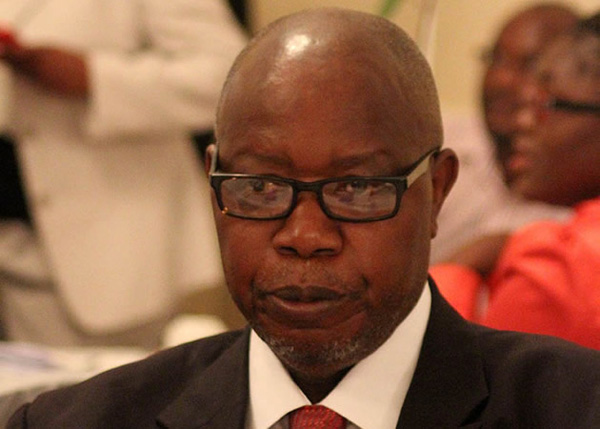
BY GEOFFREY NYAROTA
The name of the last editor of The Rhodesia Herald was Robin Drew, who succeeded Rory Fothergill in that position.
Over in Bulawayo, the last Smith era editor of The Chronicle was Sandy Robertson, while the last white journalist to serve as editor of The Sunday Mail back in Salisbury was Rhys Meier.
They were all fine journalists whose tenure of office was swept off by the winds of change that is all with the notable exception of Fothergill.
Within two years of Zimbabwe’s independence in 1980 the Rhodesian-era editors had effectively been replaced by black journalists.
Farai Munyuki was appointed editor of the company’s flagship, now The Herald.
He and Willie Dzawanda Musarurwa returned from Lusaka, where the latter had been spokesman for Joshua Nkomo’s Zapu.
He was appointed editor of The Sunday Mail, then Zimbabwe’s largest selling newspaper.
- Chamisa under fire over US$120K donation
- Mavhunga puts DeMbare into Chibuku quarterfinals
- Pension funds bet on Cabora Bassa oilfields
- Councils defy govt fire tender directive
Keep Reading
He became then Prime Minister Robert Mugabe’s earliest critic and was soon effectively side-lined from the popular newspaper.
He was replaced by Henry Muradzikwa in 1985. He had returned from Cairo, where he studied political science and sociology.
Meanwhile, at The Chronicle, Robertson was replaced by Tommy Ganda Sithole, who had been a sports journalist in Dar es Salaam, Tanzania.
To complete the process of Africanisation of the press, I was appointed editor of the weekly Umtali Post.
The only one among the new crop of editors to have trained in Rhodesia, at the Rhodesian Printing and Publishing Company’s Cadet Journalism School, I replaced Jean Maitland Stewart.
She had incurred the wrath of Information minister Nathan Shamuyarira when she published an editorial comment, which questioned the decision by the new government to create the Korean-trained 5 Brigade in 1981.
This was the line-up of editors at the Zimpapers stable at the subsequent outbreak of the Gukurahundi onslaught on Matabeleland and the Midlands provinces by the said 5 Brigade.
Government’s official explanation when it deployed the red-beretted troops into the western regions of Zimbabwe was that they would counter the menace posed to the country’s security by dissidents.
These were former Zipra fighters who had deserted from the newly established Zimbabwe National Army, following the dismissal of Nkomo and other PF-Zapu leaders from government.
But reports started to filter out that rather than target the dissidents, some elements of the newly created brigade were killing innocent civilians.
The Gukurahundi massacres raged on relentlessly until a Unity Agreement was signed between Zanu-PF and PF-Zapu in December 1987.
Journalists had operated in an atmosphere of a strict control of the media by government, a state of emergency, renewed every six months, as well as a curfew, which rendered it a challenge for the press to provide adequate coverage of the onslaught.
An earlier period of conflict was before independence during the war of liberation which pitted the Zanla and Zipra guerrilla armies against the Rhodesian security forces of rebel leader Ian Douglas Smith.
Thousands of innocent people were routinely killed by the security forces in the rural areas in the northern and eastern regions of Rhodesia.
Thousands more were massacred in airborne attacks by the Rhodesian Airforce on Zanla bases at Nyadzonia and Chimoio in Mozambique as well as against Zipra bases in Zambia.
Coverage of the war in the Rhodesian media was limited to official statements issued by Combined Operations headquarters.
While they were independent of the control of the Ian Smith regime, the newspapers of the day said little, if anything in condemnation of the relentless massacre of the African population.
Messrs Fothergill, Drew, Robertson, Meier and Maitland-Stewart all retired peacefully.
To my knowledge they have never been accused, condemned or demonised by name, least of all by the relatives of the victims of massacre for remaining silent while the security forces slaughtered some of the African population.
The editorials published in newspapers are not the personal opinions of the editors.
Normally they reflect the agreed position of the editorial collective or of the publishing company.
In recognition of this, the Gukurahundi era editors, Munyuki, Musarurwa, Sithole, Muradzikwa, Saidi and myself were individually spared the wrath of the people of Matabeleland while the atrocities raged on.
That was until 2003, a total of 17 years later, when a campaign against me personally was launched in rather peculiar circumstances by a young former Daily News reporter who was now based in Cardiff, Wales.
There he had just launched a news website, NewZimbabwe.com.
Mduduzi Mathuthu singled me out while vilifying and demonising me for allegedly failing as editor of The Chronicle, to provide adequate coverage or for instigating the massacres altogether.
This condemnation of me did not arise from a formal court of law process or other competent judicial body.
It was just the opinion of a young blogger on the hunt for donor-funding.
A question that has puzzled many is what is so unique about my journalism that out of the six editors of the time I am the only one singled out for condemnation over Gukurahundi?
Alternatively, what have I done to deserve to be convicted even for sins that are clearly those of other editors whose names are rarely, if ever, mentioned?
Post-Apartheid South Africa had its much-celebrated Truth and Reconciliation Commission.
Zimbabwe on the other hand, depends on the intervention of youthful bloggers, who were probably in diapers at the time of Gukurahundi.
Now they preside over hastily convened kangaroo courts, where they convict the innocent with total impunity.










